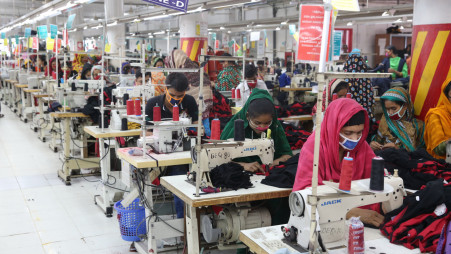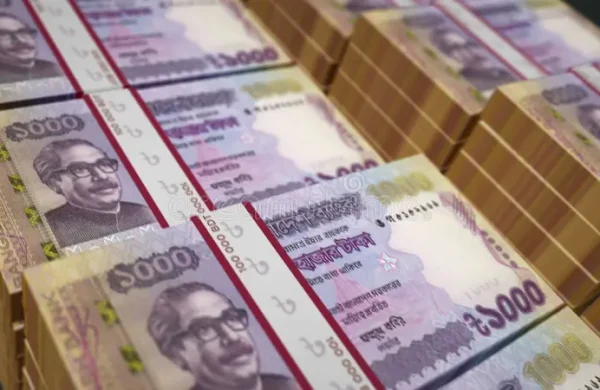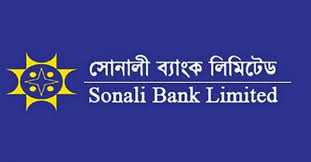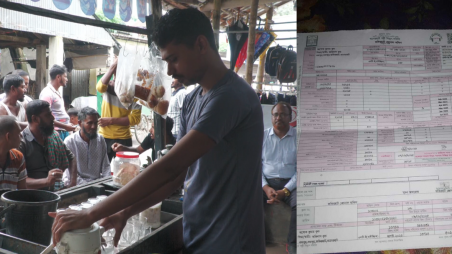RMG business sees new prospects in the US market
- Update Time : Saturday, August 2, 2025

Staff Correspondent:
Bangladeshi exporters breathed a sigh of relief as the reciprocal-tariff on Bangladeshi products in the US market has been reduced to 20 per cent. This rate is lower than that imposed on competitor countries like China and India. As a result, Bangladeshi entrepreneurs see the potential for increased exports to the US market in the future.
Exporters in the readymade garment sector say that the reciprocal-tariff may slightly dampen demand for apparel in the US market. Even so, a significant opportunity for export growth is emerging. Since China is subject to higher tariffs, a large number of orders will shift away from there. Bangladesh could secure a share of that, possibly a substantial one, given that India faces a 25 per cent tariff. They also note that due to the high tariffs in the US, Chinese exporters might become more aggressive in the European Union (EU) market, bringing new competitive pressure for Bangladesh there.
Just before the counter-tariff was set to take effect on 31 July, US President Donald Trump announced the final tariff rates on several countries, including Bangladesh. The counter-tariff on Bangladeshi products was reduced from 35 per cent to 20 per cent. The president also extended the implementation deadline for this reciprocal tariff by one week, setting it for 7 August.
Mohammad Abdus Salam, Managing Director (MD) of Asian-Daff Group, one of the top exporters of Bangladeshi products to the US, told journalist “The reduction of the reciprocal-tariff from 35 to 20 per cent is a huge relief. With tariffs now similar to those on our competitor countries, we’ll be able to stay in the competition.”
SM Abu Tayeb, MD of Chattogram-based Independent Apparels, told journalist “Although the counter-tariff is now on par with our competitors, we still need to reduce business costs to remain competitive. Sadly, at a time when we need to cut expenses, port charges and fees at private depots are being increased. If we want to stay competitive, the burden of such internal costs must now be addressed.”
The US is the single largest export market for Bangladeshi goods. In the 2024-25 fiscal year, Bangladesh exported goods worth $8.69 billion to the US, accounting for just over 18 per cent of the country’s total export earnings. Of these exports, over 86 per cent were readymade garments (RMG), totaling $7.54 billion.
For a long time, China has held the top position in RMG exports to the US market. However, during Donald Trump’s first term, the US became embroiled in a trade war with China. Since then, apparel exports from China to the US have been steadily declining. After Trump returned to power for a second term earlier this year, the shift of purchase orders away from China accelerated. In the meantime, US buyers and importers adopted a cautious approach to observe the effects of the counter-tariff.
Asked about the situation, Shovon Islam, MD of Sparrow Group of Industries, told journalist “We’re in a good position. Even if demand falls slightly due to the counter-tariff, we don’t expect our exports to drop because orders will shift from China. But to secure large volumes of business, we need to boost our capacity, and that will require some government support.”
The top 10 apparel-exporting countries to the US are Vietnam, China, Bangladesh, India, Indonesia, Mexico, Honduras, Cambodia, Pakistan and Korea. President Trump has imposed reciprocal-tariffs of 20 per cent on Vietnamese products, 30 per cent on Chinese, 20 per cent on Bangladeshi, 25 per cent on Indian, and 19 per cent on goods from Indonesia, Cambodia, and Pakistan and 15 per cent on Korean products.
Fazlul Hoque, former president of the knitwear manufacturers’ association BKMEA, told journalist “The reduction of the counter-tariff from 35 to 20 per cent is undoubtedly good news. However, due to the added tariffs, purchase orders may remain low for a few months. The government must ensure that small and medium factories are not pushed out of business during this period. If this new tariff rate is maintained, there will certainly be new opportunities in the garment sector.”
















